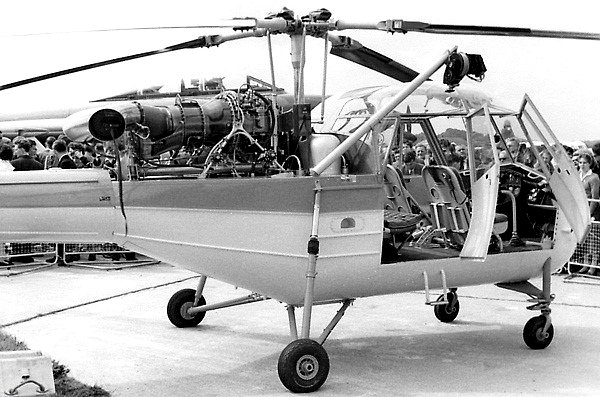
Saunders-Roe Limited was a British aero-and-marine-engineering company based at Columbine Works East Cowes, Isle of Wight. The name Saunders-Roe was adopted in 1929 after Alliot Verdon Roe (he behind the development of the Lancaster bomber, the Vulcan and the Blue Steel missile) and John Lord took a controlling interest in the boat-builders S.E. Saunders. Prior to this (except for the Sopwith/Saunders Bat Boat) the products were Saunders, the A4 Medina for example dating from 1926. Sam Saunders, the founder, developed the Consuta material used in marine and aviation craft.
In 1951 Saunders-Roe took over the interests of the Cierva Autogyro Company a helicopter design of which was developed into the Skeeter helicopter. In September 1952 the company comprised:
- Saunders-Roe Ltd. with a Head Office in Osborne, East Cowes, Isle of Wight (I.O.W.) with works at Columbine I.O.W. and Southampton Airport
- Saunders-Roe (Anglesey) Ltd, Friars Works, Beaumaris, North Wales
- Saro Laminated Wood Products Ltd., Folly Works, Whippingham, I.O.W.
- Princess Air Transport Co. Ltd of Osborne I.O.W. with an office in London at 45 Parliament St. SW1
In 1959 it demonstrated the first practical hovercraft built under contract to the National Research Development Corporation to Christopher Cockerell's design, the SR.N1.
In the same year Saro's helicopter and hovercraft interests were taken over by Westland Aircraft which continued the Skeeter family with the Scout and Wasp the latter starting life as the P531.
Design of the P531 began in November 1957 as a private venture improvement of the company's earlier Skeeter. The first prototypes were powered by a derated 325 shp Blackburn Turbomeca Turmo 600, a free turbine engine allowing clutchless transmission. The P531 first flew on the 20 July 1958. Three more developed P531-0s followed and these were delivered to the Royal Navy/Fleet Air Arm for trials and familiarisation. Following evaluation by the Navy a batch of 30 developed aircraft were eventually ordered as the Westland Wasp.
Two militiarised P531-2s were completed in 1959, powered by the Blackburn Nimbus and the de Havilland Gnome H1000 free-turbine engines, both derated to 635 hp now that the transmission tests had proved such powers acceptable. Like the Turmo installation, these engines were mounted, uncowled behind the cabin for easy servicing. There were aerodynamic shape revisions and a floor extension to allow six, rather than five seats. The vision was improved with perspex panels in the doors, tankage was increased and all-metal rotors introduced. These modifications increased gross weight by 1,200 lb (544 kg).
Saro had an order for eight pre-production aircraft from the Army Air Corps for evaluation and trials; these would have been known as the Saro Sprite, but the company was taken over by Westland and the aircraft became the first Scout A.H.1s.
Another P531-2 was built for evaluation by the Indian government but following a lack of interest was re-worked as Scout standard for the Army Air Corps.
 The Saunders-Roe Saro P531 Mk1 G-APNV at the 1958 SBAC Show at Farnborough on 13 September 1958
The Saunders-Roe Saro P531 Mk1 G-APNV at the 1958 SBAC Show at Farnborough on 13 September 1958
 G-APNV at Farnborough on 7th September 1958
G-APNV at Farnborough on 7th September 1958
 The glorious Saunders-Roe 'Saro Princess' at the Saro Works, East Cowes in September 1954
.
The glorious Saunders-Roe 'Saro Princess' at the Saro Works, East Cowes in September 1954
.